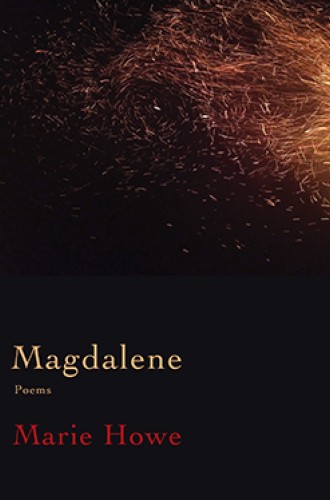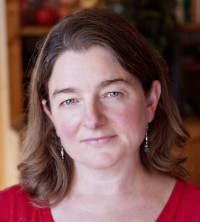Mary Magdalene is every woman
Marie Howe’s poems present Magdalene in many forms, contemporary and ancient.
I first heard Marie Howe read from these poems at a conference on writing and spirituality, and one poem in particular hit a nerve in the group of aspiring writers and clergy. “On Men, Their Bodies” is a litany of encounters with penises that the narrator, presumably “Magdalene,” has had.
Some at the conference objected that the poem was needlessly incendiary, meant to attract attention rather than elicit conversation. Others argued that it had been a valuable refocusing—men are rarely reminded of their embodiment in a religious context. Toward the end of the week, I asked a rabbi friend how he had felt about the incident. “I felt like it was an invitation to be a body,” he said. “I felt freer after that poem, like I could show up here as a full human being.”
Such is the complexity of the word Magdalene in our cultural moment. Mary Magdalene, the biblical figure and follower of Jesus, has been widely misinterpreted as a prostitute. She has been confused with many other women in the biblical stories, blended together into one type—the repentant harlot—despite biblical evidence to the contrary. There have been many attempts to set this tradition straight. Howe’s Magdalene poems are not in this lineage.
Howe does not try to separate the “true” Magdalene from false ones. Instead, Magdalene appears in many forms. She is both contemporary and ancient; a leader and a follower; an addict and a mother. Howe seems to have held up a prism to the culture’s multitude of Magdalenes and then traced each refraction on the page.
In one poem, Magdalene is the woman of John 8, who has been “caught in adultery” and is about to be stoned. “Now imagine that someone is about to push you, someone you know / and then they don’t.” In most tellings of the story, the reader is aligned with either Jesus or those who have brought the woman into the temple square to be stoned. We typically use the passage to reflect on judgment—who casts judgment and why. But Howe enters the woman’s experience, wondering what it feels like to walk so close to death and then to be spared.
She continues this line of thought with the next poem, “Magdalene: The Next Day”:
and I walked where I wanted, free from the pretense of family now,
belonging to no one
back to the place where he’d bent and written in the dust.
The question of the poem is how to begin again. When one life has ended so dramatically but life itself continues, how does a person move forward? The poem ends ambiguously. The narrator of the poem sees Jesus standing nearby. We do not know if she approaches him or not, until the next poem continues the narrative. These pauses give the reader multiple spaces to enter and to reflect.
It is possible that “Magdalene” is the name given to all of these women because she serves as a companion to women of many walks of life. Magdalene, as an archetype, seems to ask, “Have you been misunderstood? I have also been misunderstood. Have you tried to live as fully body and fully spirit? I have also tried. Have your loves sometimes failed? So have mine.” Magdalene appears as “a door slammer and a screamer / a professor, an explainer, a dog / —instructing ducks.” She goes to Niketown, rides a stationary bike, adopts a daughter (as Howe has done), makes love on the ocean shore, and attends to the body of Jesus at Gethsemane and Calvary. In some ways, it is because she shows up at Niketown that she is a credible presence at Calvary. The connection Howe creates between these places invites readers into the mythological story, trying on its significance for the present moment.
One of my favorite poems that mixes contemporary and ancient versions of Magdalene features her attempt to give an account of the seven devils that had once plagued her:
The first was that I was very busy.
The second—I was different from you: whatever happened to you, could not happen to me, not like that.
The third—I worried.
The fourth—envy, disguised as compassion.
The fifth was that I refused to consider the quality of life of the aphid,
The aphid disgusted me. But I couldn’t stop thinking about it.
The mosquito too—its face. And the ant—its bifurcated body.Ok the first was that I was so busy . . .
Magdalene is every woman—with contemporary, devilish plagues. She cannot even conjure up the presence of mind to complete the list and keeps starting over, as if interrupted by the bleeping of her cell phone, drawn back to the demons she had sought to be rid of.
But as the book moves from “Before the Beginning” to “End (no end),” grace appears as a series of never-ending invitations. We are invited into silence, into careful observation, into self-examination, into empathy, and into love. Even when we fail at any or all of these ventures, we are invited again. The theology implicit in these poems is that there is no final answer. When the woman caught in adultery shows up the next day, the teacher who has saved her life becomes “a book too difficult to read”:
So, I thought I had to become more than I was, more than I’d been.
but that wasn’t it. It seemed rather that
something had to go. Something had to be let go of.
The one who is redeemed is set on a path of learning and relearning, of claiming and releasing that has no end. “I know you think you already know but— / Wait / Longer than that. / even longer than that.”






